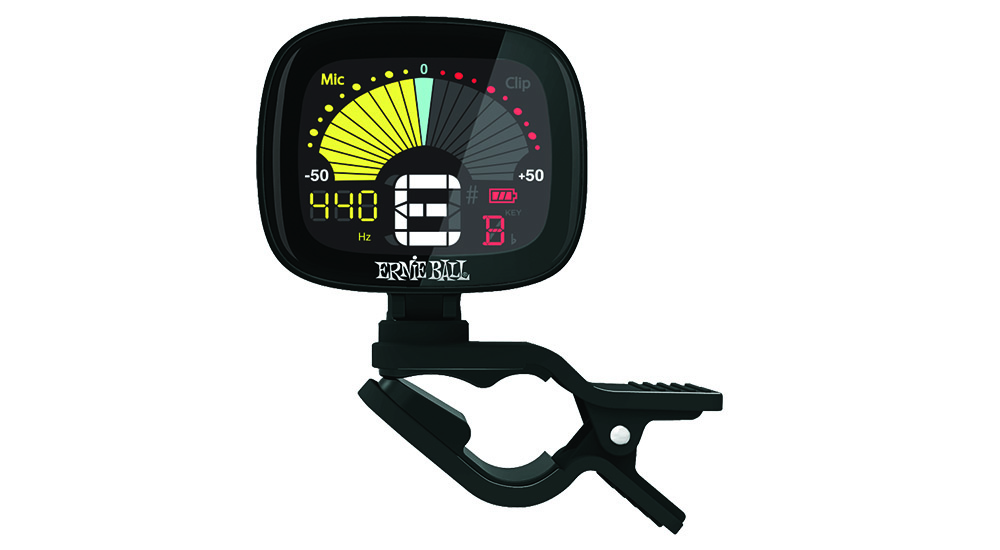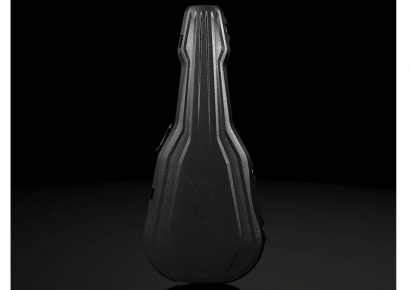So, what’s in a name then? Ernie Ball has dubbed this little beauty the FlexTune because it offers more flexibility and options than other tuners in the clip-on category.
Multi-instrumentalists are in luck here. The FlexTune works on guitar, bass, ukulele, banjo, violins and more. To be honest, if you’re playing all those instruments during the same gig you either need to reassess the direction your band is heading in or hope there’s a big market for Arcade Fire tribute bands in the future. Regardless, this makes for a very handy addition to your home studio. Keep it lying around and you’ll be set for almost any occasion.
Its dual-axis 360-degree arm swivels around all the way behind the headstock. This makes it easy to keep track of your tuning throughout the gig, without having a little black device protruding from the top of your headstock the entire time. It’s a small difference, but once you get used to how discreet the FlexTune is, it’s hard to turn back. With both the arm and the display able to rotate, it’s also able to accommodate different playing positions. Whether you’re standing or sitting, you’ll be able to find the right angle that works for the situation every time.
Other tuners can get confused when moving away from standard, but the FlexTune was also able to handle moving from EADGBE to open C# with ease. The 2” LCD display is large enough to properly see what you’re doing without being too cumbersome. Being a clip-on, it’s sometimes even easier to see than a floor tuner as you’re able to maneuverer it to suit.
Whether you want to tune at 440hz or 450hz and everything between, the FlexTune will get you there and get you there precisely. Even in noisy situations – even on stage with a bass and kick coming through the monitors – this worked a charm. In a nice touch, you can also select between ‘mic’ mode or ‘clip-on’. I found no difference in tuning precision between the two, but for home environments I tended to stick to ‘mic’. Whatever your preference, it’s good to have the option to switch between the two at will.
Here’s the thing. No one’s pining after the latest tuner. They’re not the most exciting things to go out and buy. But the truth is, they’re absolutely essential. The first thing that separates pro players from amateurs – from someone wincing at your music to enjoying it – is whether you’re playing in tune. It’s a simple thing to get right, and the FlexTune aims to make it simple as possible. If a no-fuss, quality clip-on tuner is what you’re after, they don’t come much better than this.

